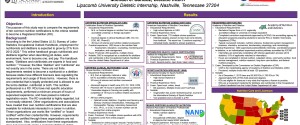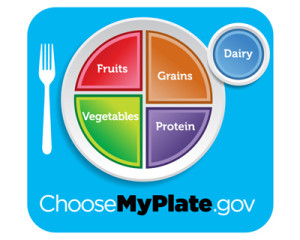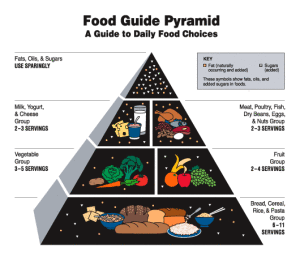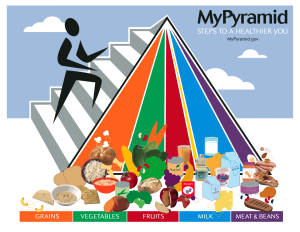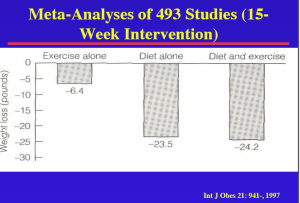Edit: Updated statistics are available at a new link on the CDR website: Current demographics show 98,053 dietitians, 90.6% female, 3.8% male, 5.6% not reported, 77.8% white as of July 3, 2017. Here’s a list of other credentials issued by the CDR and respective demographics. The rest of the article will be based on the 2013 demographics.
——–
According to the Commission on Dietetic Registration’s demographic profile of registered dietitians as of December 1, 2013, 94.3% of RDs are female and 81.8% are white.
Interestingly, many health insurance companies declare network capacity by ‘number of dietitians’ and not the diversity of providers. I know this because I have had to try very hard to get in-network with a number of insurance companies that have panels 100% of white females only to be told that there is no discrimination policy or diversity quota in place for providers.
There should be. Patients should have a right to finding a demographic of a provider they identify with: whatever race, gender, religion, or sexual orientation that they feel comfortable with. Not 100% white females.
You can check this by going to your health insurance provider’s website, looking for specialists, and then selecting nutritionist, dietitian, or registered dietitian, depending on how the profession is listed at your health insurance company.
Don’t get me wrong, white females do very good jobs at nutrition counseling, are fully qualified, and it shouldn’t matter. However, many different types of people exist in the world, and healthcare can be much more effective if the patient identifies better with their healthcare practitioner.
Being able to choose the demographic of your healthcare practitioner can enhance credibility, trust, and the feeling of being cared for. Even if objectively there is no difference in the credentials and education, there are subjective differences that it is politically incorrect to even mention but can affect quality of care. And I’m not talking as a healthcare provider, I’m talking about patients’ perspectives.
Patients come from a variety of backgrounds, cultural, gender, geographic location, religion, sexual orientation, etc. Healthcare practitioners cannot control initial biases of a patient that may make them discredit the information they receive. It is a reality whether we like to acknowledge it or not. Sometimes a patient may not feel comfortable bringing up a question based on who the patient thinks the practitioner perceives him or her to be versus who he or she actually is.
I am all for equal pay and benefits to women and men for whatever job they do. However, if we are going to talk about women in engineering (or any STEM field or law), it shouldn’t be taboo to talk about men in dietetics, a traditionally female field.
Interestingly, women in engineering represent a larger proportion, 13%, according to MIT news, of their workforce than the 3.5% represented by men in dietetics. I once had a personal training client who went on and on about women in engineering and law, ignorant of the number of men in dietetics. And who is to say one is more important than the other? I was able to connect on the feeling of being a minority in a field, but I didn’t feel at liberty to talk about under representation of men in dietetics because it makes me sound like a ‘meninist,’ which is a shameful political view.
Reasons why men aren’t in dietetics? Many of the jobs do not pay enough is one. The median full time pay is around $50k/yr, and as someone who is in the field, I can tell you that it is 10-20k less in Austin unless you are a director of a major organization, you may make more. Since becoming a registered dietitian requires a minimum of a master’s degree starting in 2024, seven years of education to make less money is probably not appealing to men, who are often traditionally (and sometimes still) thought to have to provide for a family and fund the cost of dating. (Note the RD is a 5 year credential, 4 years for the degree in dietetics and 1 year of supervised practice; many RDs have much more education than the minimum).
But that doesn’t seem to stop men from going into fields like teaching, which has higher numbers than men in dietetics. In fact, 23.7% of teachers of primary and secondary schools in 2011-2012 were men, according to the National Center for Education Statistics. So something else must be the case.
Another reason there are fewer men in the profession could be the perception that it has traditionally not been considered masculine to care about calories, have soft skills like counseling, ability to comfortably show empathy, people skills that can elicit behavior change from clients, and ability to meal plan.
Traditionally, men don’t cook or bake as much as women in the home or take care of children, and there are many other skills that traditionally women are thought to be better than men at doing. (Yes, there are excellent male chefs and stay at home dads, but I am talking traditionally).
Discussions on breastfeeding and/or pregnancy, often done at WIC clinics, are something women are naturally more expert than men at doing because they have the anatomy.
Additionally, there were certain things in the educational experience left over from when the profession may have been more like home economics or closer to working as a chef such as a class on how to set a table, appropriately garnish a plate, and other food service skills. These may not be appealing to guys in their early 20s in college.
Nutrition science is what attracted me to the profession. I love the science: nutrition biochemistry and exercise physiology. Recently, I have also taken a penchant for counseling psychology. I’m competitive against my younger self at getting people to make changes with regards to their health and well-being in how I implement education and counseling.
In addition, private practice pay is based on how much business you want and how well you market and get client success. As a competitive person, this is motivating to me. Whereas working full time, possibly changing people’s lives, and getting paid less than the median expected pay in the profession while not having freedom to practice how best helps patients is a reason not to work as an employee in this field. That is not motivating to me.
Are men openly accepted in this field? In some ways yes. I can tell you that a number of clients have specifically come into my office because of my gender, overtly stating they wanted a male. I think I may bring in clients who normally would never see a registered and licensed dietitian. I think diversity in the profession would only help more people to know what we actually do by bringing in more types of people who normally wouldn’t come in.
In MANY other ways, there was a lot of unjust discrimination I endured going through the education and training process of becoming a dietitian (and after becoming one) that, because of aggressive feminism (not true feminism, which is about equality of genders) and/or others’ projections about men, I felt unable to even be allowed to voice opposing viewpoints because it wouldn’t be considered politically correct and fall on deaf ears when 3.5% of the profession is male (much like I stated above, where men represent a smaller percentage of dietetics than women do in engineering).
In fact, I don’t even feel free enough to voice it on this blog. Suffice it to say, after years of being underestimated and written off as a ‘stupid man’ (quoted, a supervisor during my internship stated under her breath) who couldn’t begin to understand the intricacies and emotions involved in nutrition counseling, it motivated me to start my own private practice because, yeah, I do know what I’m talking about. I feel competent to counsel individuals independently about nutrition and nutrition/exercise-related healthcare. I certainly have gone out of my way to get the credentials and experience to prove that.
Unfortunately, I don’t have a professional counseling credential behind my name, but I have been to therapy for over 6 years (at time this is written) going twice a week in a group and individual setting and am very familiar with counseling skills having worked through my own issues and seen others of a variety of different personalities and backgrounds work through theirs. And I’m out about that because I’m proud about it and hold my hat off to the various counseling professionals who are so good at what they do (and I do work with them–my office is surrounded by them!). I know when to refer patients to seeing a counselor when it is beyond my abilities, which is what our code of ethics states we should do.
Back onto differences between men and women:
Men and women write and emote differently (or if looking at masculine vs feminine gender expression, there is a masculine and feminine way of writing and emoting). If you are a man (or a woman who writes like a man), chances are you don’t write with many exclamation points in your emails, emoticons, and attempts to influence the recipient’s emotional response of your email.
In dietetics, the female manner of writing is expected in emails. Our dietetic practice groups have explicit netiquette rules that state that anything that has the effect of disparaging any individual is inappropriate, too terse, bossy/demanding, and abrupt. While ‘alternative points of view are encouraged,’ they really aren’t.
If you have an alternative point of view, it can have the effect of disparaging an individual if they wish to view it that way, and thus the email is inappropriate because it can feel critical on the way others practice.
I feel, as a man, if I don’t attempt to really spend time on my emails and make them less succinct, well good luck winning friends and influencing people in the profession. And it’s not like I don’t have other things to do during the day. It takes a lot of time to write emails in an attempt to not hurt any of the 89,300 people’s feelings in our profession and how they might misinterpret what I wrote and take it offensively. Well guess what, as a man, I automatically am much more likely to offend someone in our field because of my gender because men are perceived ‘forceful’ in any opinions we have.
While it might be thought of as confidence and life experience in an older woman, for a younger man, it is considered arrogance, regardless of whether I actually have that confidence and life experience.
As someone who went to an all male Catholic school, I was not taught to write in a deferential manner. I was taught to write to get my point across.
I understand that women’s rights are still not on the same level as men’s. But to be a scapegoat for all the angst of women by being a male in the profession, that is the job of being a man in a 94.3% female profession (notably 2.2% of the profession didn’t declare a gender, so perhaps we have 2.2% transgender individuals). I also am expected to behave up to a standard women in the profession don’t hold themselves to (many who don’t follow the code of ethics themselves). I have personally received emails from multiple other dietitians telling me how to act since becoming a dietitian, both with the ‘tone’ of encouragement and with the ‘tone’ of attempt to control my behavior.
Even when going through my internship program, most of the members of my internship class went to a women’s conference together. I was not invited or thought of. I was left out on purpose. Let’s suffice it to say I didn’t feel part of the group or welcomed.
Enough on gender differences though. I digress.
There is a great need for more racial diversity within the field of credentialed and practicing licensed dietitians in addition to more gender diversity. People who need nutrition services come from a wide variety of cultures. Who better than a practitioner who is trained in the profession and comes from that culture to help people from within the culture?
As much progress in civil rights as there has been in the last century, it isn’t enough. People of different races deserve the option of a healthcare practitioner of the same race to avoid unsaid prejudices from either side. Prejudices still exist and need to be acknowledged.
Cultural competence is taught in dietetics education, but it is not enough. We cannot control a patient’s biases as practitioners, and for the sake of a patient, he or she needs to have the option to choose a practitioner with whom they can at least have confidence fewer assumptions of bias are happening from either side.
Dietetics education programs should be making it a top priority, for the sake of the credibility of the profession and ability to have an impact on more people, to be inclusive of men and non-white racial groups. An effort needs to be made to make the profession more appealing to minority groups and diversify the profession demographics. Insurance companies should also have more diversity within their practitioners. It is unacceptable for 100% of a list of specialists to be white females and that the insurance companies are ok with this.
Share on
